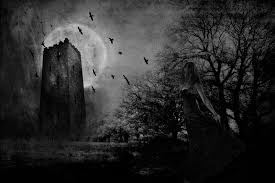
记忆方法
1. 音译“哥特”。
中文词源
Gothic 哥特式的
来自Goth, 哥特,目耳曼民族名。
英语词源
- Gothic (adj.)
- "of the Goths," the ancient Germanic people, "pertaining to the Goths or their language," 1610s, from Late Latin Gothicus, from Gothi, Greek Gothoi (see Goth). Old English had Gotisc. As a noun, "the language of the Goths," from 1757. Gothic was used by 17c. scholars to mean "Germanic, Teutonic," hence its use from 1640s as a term for the art style that emerged in northern Europe in the Middle Ages (which has nothing to do with the historical Goths), originally applied in scorn by Italian architects of the Renaissance; it was extended early 19c. to literary style that used northern European medieval settings to suggest horror and mystery. The word was revived 1983 as the name for a style of music and the associated youth culture (see goth). In typography, in England of black-face letters used for German text (1781), in the U.S. of square-cut printing type. Gothic revival in reference to a style of architecture and decorating (championed by Sir George Gilbert Scott) is from 1856.
权威例句
- 1. The story ascends from a gothic tragedy to a miraculous fairy-tale.
- 故事从一个哥特式悲剧升华为神奇的童话。
- 2. The images were Gothic or Byzantine rather than classical.
- 这些形象属哥特式或者拜占庭式而非古典式。
- 3. This novel is not science fiction, nor is it Gothic horror.
- 这本小说既非科幻小说亦非哥特派恐怖小说。
- 4. It is a classic style of Gothic buildings.
- 这是哥特式建筑的典型样式.
- 5. The cathedral was eventually completed in 1490, though the Gothic facade remains unfinished.
- 那座大教堂最终于1490年建成,但其哥特式风格的正面一直未能完工。
